Composting is a broad term used to describe the way of recycling organic materials. Compost is a nutrient-rich material that looks like dirt and is used to improve soil and support plant growth. Compost is a mixture of several ingredients used to fertilize and improve the soil. It is usually produced by decomposing plant and food waste and recycling organic material. It improves soil fertility in gardens, landscaping, urban agriculture, horticulture, and organic farming, reducing reliance on commercial chemical fertilizers.
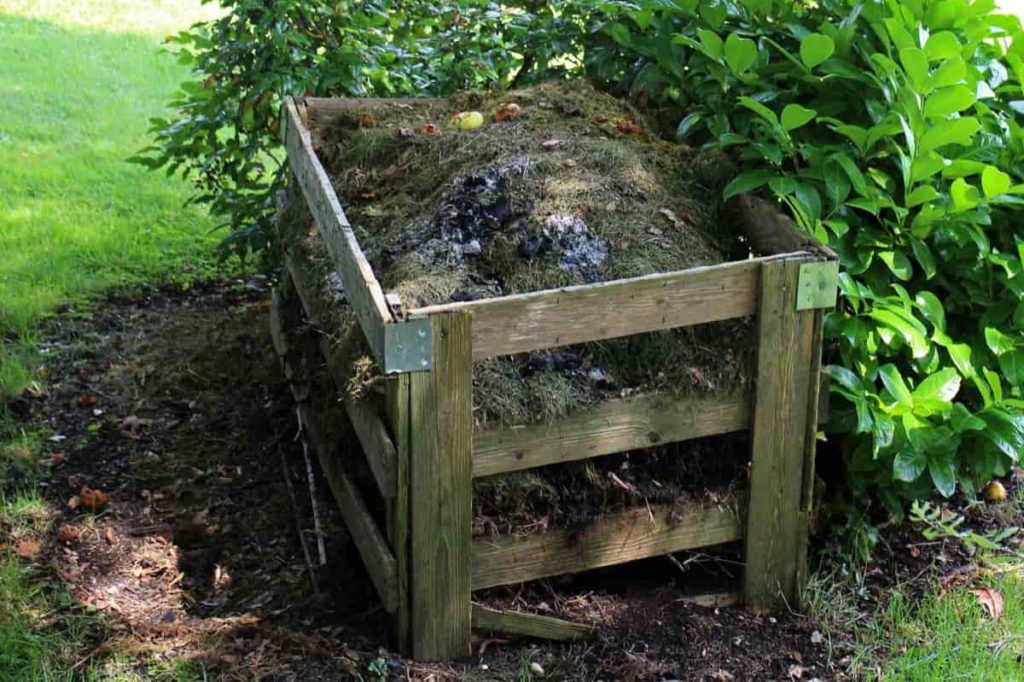
A guide to understand the composting of a garden/farm
What is the process of composting?
- Composting process is an aerobic method of decomposing organic solid waste. Hence it can be used to recycle organic materials. This process involves breaking down organic matter into a humus-like material called compost, a good fertilizer for plants.
- Composting is the microbial process of decomposition in which plant and animal wastes are naturally broken down to form organic fertilizers. Organic manure is used to enrich the soil, which helps in plant growth. It occurs in the presence of certain bacteria and fungi.
What is the purpose of composting?
Compost mainly enriches the soil, helps retain moisture, and suppresses plant diseases and pests. It reduces the need for chemical fertilizers. The main benefits of compost include providing nutrients to crops as fertilizer, acting as a soil conditioner, increasing the humus or humic acid content of the soil, and introducing beneficial colonies of microbes that suppress pathogens in the soil.
The main composting purpose is to reduce the amount of solid waste you produce and keep it out of municipal landfills, which can ultimately save you tax money. Prepared manure can also be useful as a natural fertilizer and is more environmentally friendly than synthetic fertilizers.
How do I use banana peels in a composting?
Composting banana peels in a composter requires a few things;
- You will need a place to set up the compost pile or bin.
- You will need food scraps and other biodegradable waste.
- You will need a mixture of brown and green organic material to add to the bin.
- You will need potted plants in the garden area to dump the soil.
In case you missed it: Best Fertilizer for Herbs: Organic, Compost, Liquid, NPK, How and When to Apply
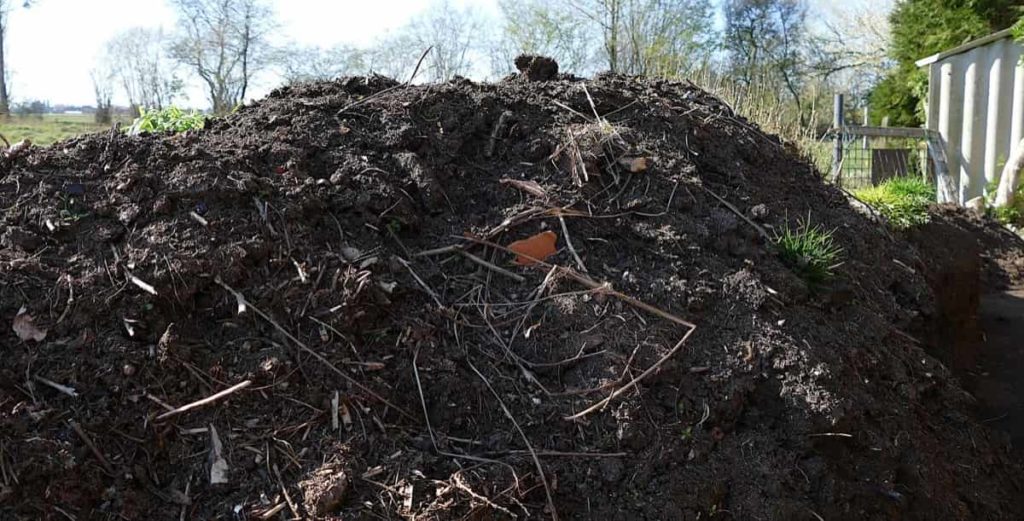
The speed at which banana peels will decompose can depend on several factors. In a traditional compost pile, the compost’s water retention rate, exposure to hot sun and temperature, and what is added to the pile can affect the decomposition rate. The resulting organic matter is nutritious and ready for use, but it can take time for everything in such a large compost pile to break down.
How to use compost?
Generally, it doesn’t matter what type of soil you have. The addition of compost can improve all soils. An easy way to apply compost is to mulch with it. Spread the compost in a thick layer over exposed soil.
- Promotes healthy plant growth – Fertilizers are best known for healthy plant growth and suppression of plant disease.
- Reduces waste – Waste reduction is another benefit of composting, as compost is usually made from waste (food scraps, organic by-products, etc.) diverted from landfill runoff. It reduces waste going to landfills and converts these materials into productive, environmentally beneficial products.
What are the best things to compost?
Good compost items include vegetable peelings, fruit waste, tea bags, plant clippings, and grass. They break down quickly and provide important nitrogen as well as moisture. Including cardboard egg boxes, shredded paper, and fallen leaves is also good.
What to compost;
| Fruits and vegetables | Yard trimmings |
| Crushed eggshells | Grass clippings |
| Tea bags | Houseplants |
| Nutshells | Hay and straw |
| Shredded newspaper | Leaves |
| Shredded cardboard | Sawdust |
| Shredded paper | Wood chips |
| Coffee grounds and filters | Hair and fur |
| Fireplace ashes |
What do you mean by backyard composting?
- Select a shady spot in the backyard near a water source for a compost pile or bin.
- Add the brown and green materials when assembling, making sure to chop or shredded the larger pieces.
- Moisten the dry ingredients as they are added.
- Once the compost pile is established, mix green waste and grass clippings into the pile and bury fruit and vegetable waste.
- Cover the compost by using a tarp to keep it moist. Then, compost is ready to use when the bottom material is dark and colored. It usually takes anywhere between two months to two years.
In case you missed it: Best Fertilizer for Tea Plants: Organic, Compost, NPK, Liquid, How and When to Apply
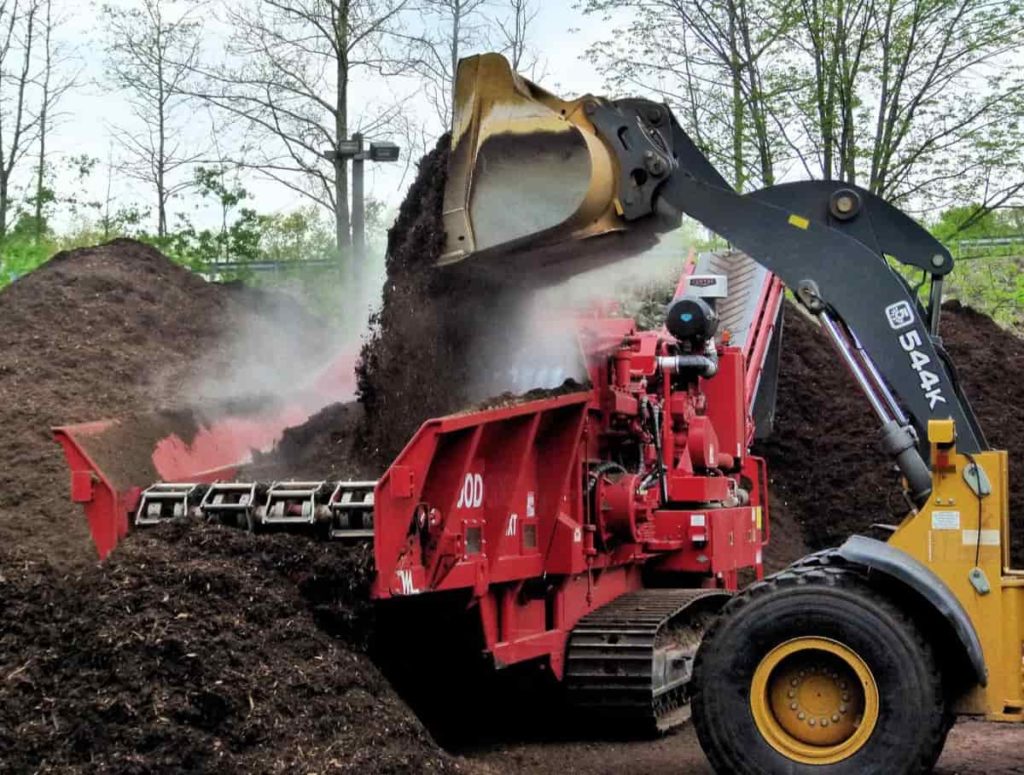
What are the components of compost?
- Browns – This includes material such as dead leaves, branches, and twigs.
- Greens – This includes grass clippings, vegetable waste, fruit scraps, and coffee grounds.
- Water – Adequate amounts of green and brown water are essential for compost growth.
What is the difference between composting and vermicomposting?
- Compost mainly refers to the end products formed by the biodegradation of organic matter.
- Vermicomposting refers to the end products formed by the degradation of organic matter.
What is the vermicomposting method, and how does it work?
Vermicomposting uses worms to recycle food scraps and other organic materials into a valuable soil amendment called vermicompost or worm compost. Worms eat food particles, which become compost as they pass through the worm’s body. If your outdoor space is limited, worm composting, or worm composting, is a great indoor option (it can also be done outside).
You can do it year-round in the basement or garage or under your sink. Vermicomposting produces a natural, odorless casting, a nutrient-rich compost, in about three to six months. Requires very little maintenance; the most important time commitment is harvesting the vermicompost every few months.
Does compost make plants grow faster and healthier?
- Compost helps plant growth and development by balancing soil density. At the same time, compost that is too loose helps to hold it together.
- This balance allows plants to develop healthy soil roots, supporting healthy growth.
How do I start composting at home?
- Choose your food scraps
- Store those food scraps
- Choose a place to make your compost
- Make a compost mix
- Wait and Aerate
What is the trench method of composting?
Trench composting, or trenching, is a method of composting in which food scraps are buried directly in the garden. This composting method is effective for materials that attract rodents, such as meat, dairy, bread, and cooked foods. It is a safe method to compost pet waste.
One advantage of a trench is that it allows you to compost small amounts of cooked food waste, including meat, grain, and dairy, because if it is buried deep in the ground, animals and insects will be less likely to be attracted to the content. If you decide to compost animal products, cover them with 12 to 18 inches of soil.
What factors affect the composting process?
Composting speeds up the natural decomposition process. Many factors can affect the speed of the composting process. These include the following:
- The carbon and nitrogen concentration in the organic material
- The volume of the material to be composted
- The aeration of the pile
- The moisture content within the pile
- The surface area and particle size of the pile
- The temperature of the pile
Compost is a natural and organic process. It does not need any chemicals, fertilizers, or pesticides. It is a cost-effective activity that can save you a lot of money. It can be quite helpful for the overall health of the soil. Additionally, compost can also improve soil fertility and protect against potential plant diseases.
Getting rid of pests in plants can be quite frustrating. However, proper composting can ensure minimum pests as compost contains various micronutrients acting as pesticides. Composting adds helpful microorganisms like bacteria and fungi to the soil. These microorganisms speed up the composting process, which, in turn, can improve soil texture and is one of the best ways to maintain your garden.
In case you missed it: Best Fertilizer for Black Gram: Organic, Compost, NPK, How and When to Apply
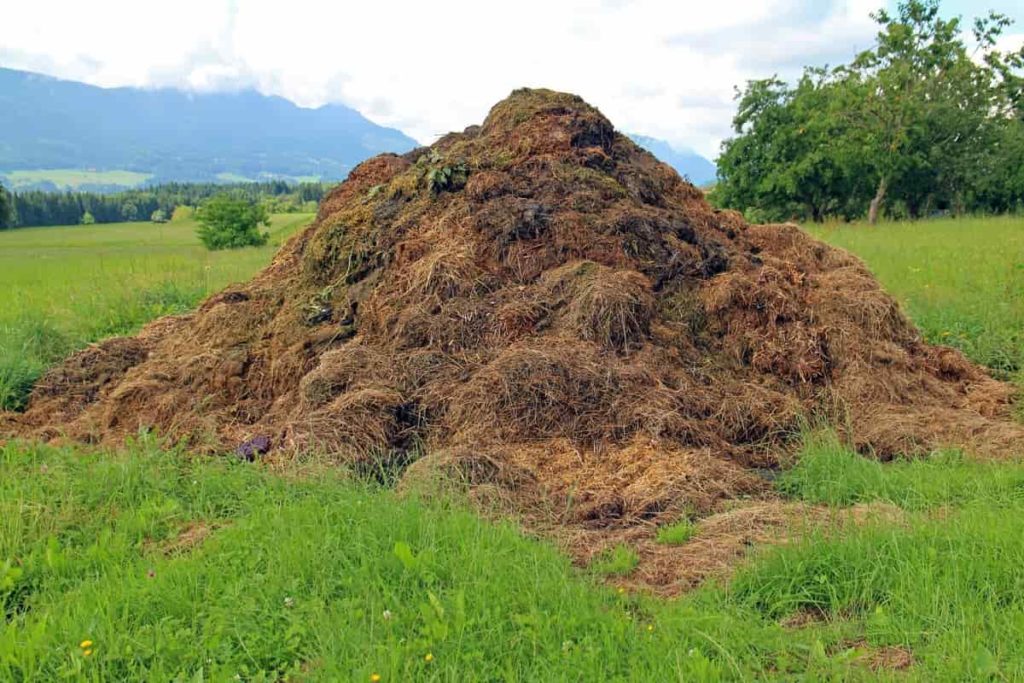
What materials should not be composted?
You should not use human or pet waste in compost piles because they can transmit diseases. Avoid using waste, such as meat, bones, eggs, peanut butter, cheese, etc., in compost piles, as these attract rodents. It is possible to compost diseased plants, weeds, and other pests. Still, only if mixed in the center of the “fast” compost pile where the temperature reaches 120° to 140° F. Some materials such as corn husks, corn stalks, corn husks, lemon peels, nut shells, and palm husks decompose very slowly.
They, therefore, must be shredded before adding to the compost pile. It will reduce the time required for them to decompose. You should avoid adding charcoal, coal ash, and automotive petroleum products to compost piles. Charcoal usually does not decompose in compost bins. Coal ash contains high levels of iron and sulfur, which are toxic to plants. And all automotive petroleum products must be taken to a recycling center.
How is composting beneficial to the soil?
Compost improves soil structure by adding carbon and providing nutrients to plants. Apart from being plant nutrients such as nitrogen (N), phosphorus (P), and potassium (K), it improves the Physico-chemical and biological soil properties. Compost improves the soil’s biological, chemical, and structural health by adding nutrients and soil biota.
How long does it take for compost to be ready to use for plants?
- Compost can be made in six to eight weeks, or more commonly, it can take a year or more. Generally, the harder you work, the sooner you will get compost.
- This process is complete when the ingredients you put in your container have turned into a dark brown, earthy-smelling material.
Where should compost be done in the sun or shade?
- You can place your compost pile in the sun or the shade, but placing it in the sun will speed up the composting.
- The sun helps raise the temperature, so bacteria and fungi work faster.
- It also means your pile will dry out faster, especially in hot southern climates.
When should you apply compost?
Wherever possible, it is best to fertilize the soil before planting new crops. Place about 4 inches of compost on your garden beds, then use a fork or spade to work the compost into the top few inches of the bed—plan to fertilize your beds between 3 and 6 weeks before planting.
Compost increases the number and variety of beneficial bacteria and fungi in the soil, which help plants grow. It is then left for a month or two to ‘mature’ before use. Don’t worry if your compost isn’t fine and dank. Even if it’s lumpy, sticky, or stringy, with bits of twig and eggshell still clear, it’s quite usable.
What will happens if you left the compost too long?
- If you leave compost too long in a pile, bag, or bin, it can still be good to use for years if you control the moisture level, cover it, and then store it in a dry place. However, it will break down gradually, nutrients will be released, and the compost may begin to rot and become contaminated with fungi.
- Storing compost too long, especially during winter or cold weather, can cause rotting and loss of valuable nutrients. If the moisture level is off, compost can become too wet, and mold can form. On the other hand, it can be completely dry and will not be useful at all.
Can I use old compost?
In general, you should replace the compost or at least one-third of the compost yearly. It is because the nutrients in the compost will be depleted after the growing season. Using more than six months old compost is not good as it can become contaminated with fungi, start rotting and lose all its nutrients.
Moreover, you can’t reuse compost or put a fresh layer on top of the existing one because it becomes compacted. When the growing medium is compacted, the roots cannot breathe because there is insufficient air in the compost. Heavy watering will also increase compaction.
When to stop adding to compost?
If you’ve left compost too long and it’s old, use it as mulch. Spread it around the roots or use it over plants in the garden. Although it does not provide nutrients, this compost prevents weed growth and locks in moisture.
If you’re new to composting and don’t want to wait years for it to be ready, compost heated in a compost tumbler is the best option. Keep the ratio of greens to greens correct, as this is the most common reason for compost tumblers not heating up.
How to speed up the composting process?
- Air circulation is important, so once your big compost pile is moist, you’ll need to turn it every few days to aerate it. Turning and mixing are important to create air pockets, avoid excess moisture, and distribute heat between piles.
- The right carbon to nitrogen (C: N) is essential for rapid composting.
- You should also add a high nitrogen content to your pile to speed up the composting process. Nitrogen-rich compost materials such as grass clippings, plant cuttings, and fruit and vegetable scraps are considered green.
- Although composting can be slow to start, you can solve this problem by adding a compost activator to your pile. Compost activators speed up composting by quickly adding nitrogen to the compost pile. Chicken or horse manure is also an excellent accelerator because it is high in nitrogen.
In case you missed it: Homemade Fertilizer for Vegetable Garden – A Detailed Guide for Beginners
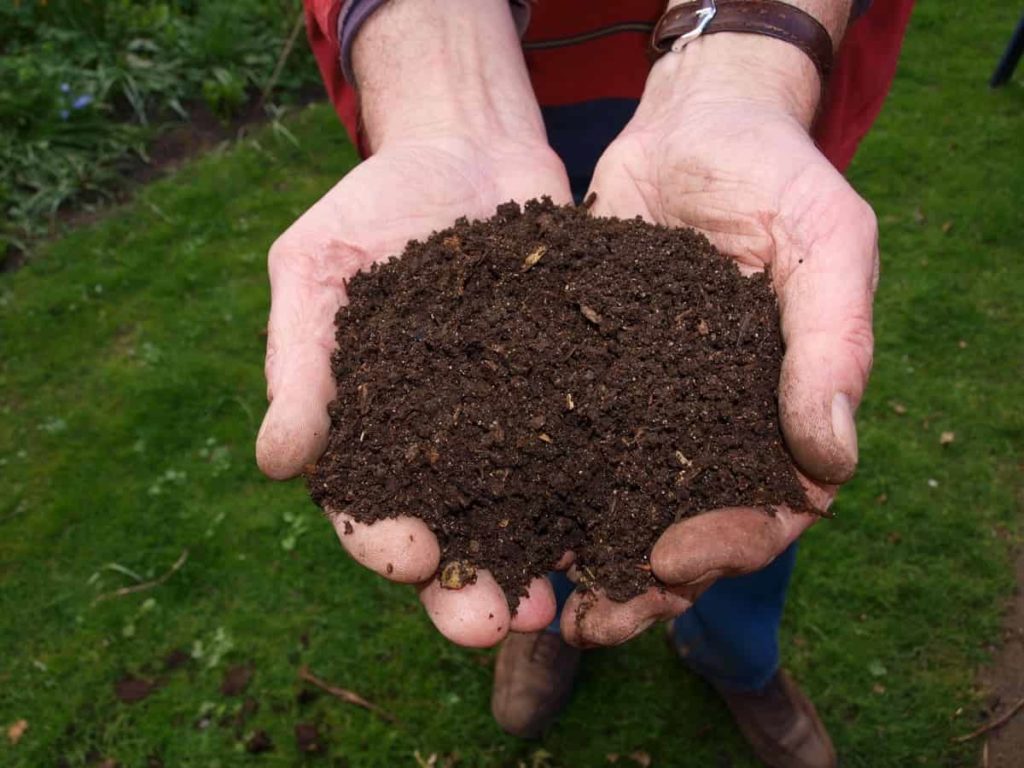
What are the three types of composting?
Composting means breaking down organic material. There are three types: aerobic, anaerobic, and vermicomposting.
Aerobic composting – With aerobic composting, the air is introduced to help break down the material faster. The compost needs to be changed every few days. It is where the “tumble” style of composter can save a lot of time and effort. Add scraps, then turn the handle or rotate the composter to keep it aerated. You’ll probably want to add lots of green matter high in nitrogen, like grass clippings.
Anaerobic composting – You can tell that anaerobic is the opposite of aerobic just by looking at the word. Anaerobic composting takes almost no effort. Just put the scraps in the compost pile or composter, and don’t mess with it for a year or so. Anaerobic composting stinks to high heaven. Without oxygen, some pretty nasty bacteria take over. That’s what happens in a landfill, and it’s not healthy. Landfills produce so much methane they can explode. Methane is a greenhouse gas that is harmful to the environment. A smelly, neglected anaerobic composter has spoiled many a garden party.
Vermicomposting – Vermicomposting uses worms, oxygen, and moisture to break down organic material with few odors safely.
What are the factors affecting composting?
- The concentration of carbon and nitrogen in organic matter.
- The volume of material to be composted.
- Pile aeration.
- Moisture content within the pile.
- Pile surface area and particle size.
- Pile temperature.
What is organic compost?
- Organic compost is made from organic sources, making it safe to use in organic gardening.
- People can make organic compost at home if they are organic gardeners, and it can also be produced commercially.
- Many garden stores stock compost for customers who want to use it.
What is the best way to compost?
Choose a site for the compost pile – One important thing to consider is where to place your compost pile. You don’t want it to be so close to your property line that your neighbors complain. Your local housing ordinance or homeowner’s association rules may tell you where you can put it.
Choose a structure – Compost structures can be as simple as a pile where you pile all the ingredients to take their course. It is an inert fertilizer. You can also make more complex compost bins out of chicken wire, wood, or concrete blocks.
Compost pile care and feeding – It is best to arrange carbon-rich and nitrogen-rich materials in alternating layers, “green” and “brown.” Add new layers of compost on top of fresh soil. Water the compost regularly to keep it moist. You’ll turn the pile with a pitchfork or shovel or crank the handle on your tumbler to mix it.
Collect the finished compost for use – Finished compost will collect at the bottom of the bin in a single bin system or a third bin in a three bin system.
What is green manure compost?
Green manures are crops grown specifically to maintain and maintain soil fertility and structure, although they may also have other functions. They are usually added to the soil directly or after removal and composting. Green manure is a practice that farmers have used for centuries to keep their crop soil healthy. Farmers grow crops of green and leguminous plants and then break them into the soil. As plants decompose, they fertilize the soil.
How can I tell if compost is working?
Compost is ready or gone when it looks, feels, and smells like fertile, dark soil instead of vegetables. It should be dark brown, raw, and smell like earth. Here are some signs that the compost pile is working properly:
- Size: The size must be reduced by 50 to 75 percent, and you may see some gas bubbles in a pile. It means that the microorganisms release carbon dioxide as they work.
- Color: It must be dark brown or black.
- Texture: It should be smooth and crumbly.
- Smell: It should not smell. It has a sweet, earthy smell, like peat moss.
- Temperature: It should be warm. Microorganisms are “cooking away,” you may even see some steam rising from the pile, especially on cool mornings.
How do you know when your compost pile is ready?
Compost is usually ready to harvest when the finished product is dark brown and smells like earth. Some signs it may not be ready include recognizable food material still visible. The pile is still warm.
What are the benefits of composting?
- Prevents soil erosion
- Assists in stormwater management
- Promotes healthy plant growth
- Conserves water
- Reduces waste
- Combats climate change
- Reduces project maintenance costs
- Improves soil health
In case you missed it: Fertilizer Management in Pomegranate Trees: Organic, Homemade, Liquid, NPK, Schedule, and Application
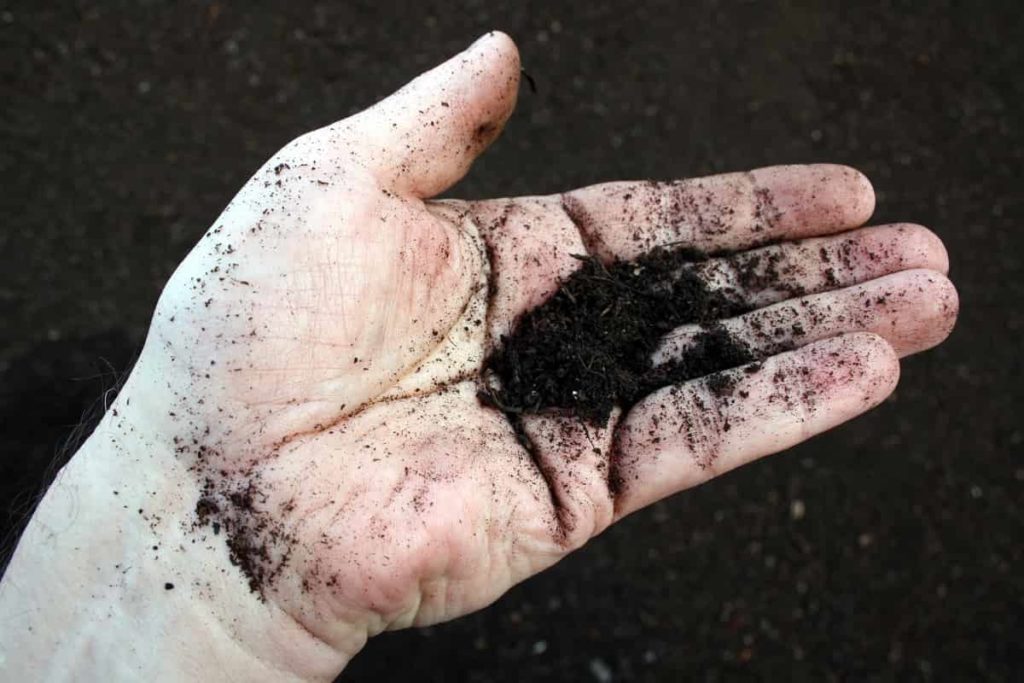
Why is composting good for the environment?
- Compost retains a large amount of water, thereby preventing/reducing erosion, reducing runoff, and helping to establish vegetation.
- Compost improves water flow by retaining pollutants such as heavy metals, nitrogen, phosphorus, oil and grease, fuel, herbicides, and pesticides.
When to add compost to Fruit Trees?
- Maximize fruit tree growth by composting in spring.
- Lightly water the soil around your trees, then add a ring of compost (an inch or so thick) about 2 feet from the trunks.
- Work the compost into the top 2 inches of soil, then cover the area with mulch to insulate the roots.
Can you put compost directly in the garden?
- Composting becomes even easier without compost bins. Burying compost directly into the garden bed wastes time and energy. Vegetable plants still receive the same benefits as traditional composting.
- The best time to compost the garden is in the spring each year. Another good time to apply fertilizer is in the fall. You must compost at the beginning of the growing season or anticipate the next one. It will enrich the soil, promote biodiversity, help prevent erosion and encourage plant growth by retaining moisture.
- Compost makes your soil healthier, more nutritious, and more pleasant to plant quickly with repeated applications over time. So make it a habit to add nutritious fertilizers to your garden every year.
When to add compost to raised beds?
- A good time to compost raised beds is before the first spring growing season or when plants begin to die back in October.
- Prepare raised beds as the growing season begins by filling them with equal amounts of topsoil, sand, and compost.
- Compost will add plenty of nutrients, increasing the likelihood of an impressive harvest.
- In the fall, cover your beds with about 3 to 6 inches of compost, or shredded leaf compost is ideal for protecting the soil over winter.
Can you compost coffee grounds?
- Yes. You should add coffee grounds to any composting setup.
- Coffee grounds benefit your soil and are one of the easiest food wastes to compost.
Why is my compost not breaking down?
Moisture is essential to activate compost. A compost that is too dry will fail to decompose. Since there is no bacterial activity, there will be no heat. Make sure your pile has adequate moisture.
What are the disadvantages of composting?
- Initial investment required
- Unpleasant smell
- Neighbors may complain
- Can attract rodents, snakes, and insects
- Rather unpleasant physical appearance
- A lot of work is involved
- Some monitoring is required
Conclusion
You get compost when organic materials like food scraps, leaves, and animal products are properly decomposed. It is a nutrient-rich and dirt-like material used for soil enrichment and growth. It is the breaking down process of organic matter, such as leaves and food scraps, into the soil. It’s a great method to recycle waste from your yard and kitchen while enriching your garden soil, increasing water-holding capacity, and preventing erosion. Composting creates ideal conditions for the natural decay and decomposition processes that occur in nature.
- Goat Farming Training Programs in India: A Beginner’s Guide
- Types of Pesticides Used in Agriculture: A Beginner’s Guide
- Economical Aquaculture: A Guide to Low-Budget Fish Farming
- 15 Common Planting Errors That Can Doom Your Fruit Trees
- How to Make Houseplants Bushy: Effective Tips and Ideas
- Innovative Strategies for Boosting Coconut Pollination and Yield
- Pollination Strategies for Maximum Pumpkin Yield
- The Complete Guide to Chicken Fattening: Strategies for Maximum Growth
- Natural Solutions for Tulip Problems: 100% Effective Remedies for Leaf and Bulb-Related Issues
- Revolutionizing Citrus Preservation: Towards a Healthier, Greener Future
- Natural Solutions for Peony Leaf and Flower Problems: 100% Effective Remedies
- Maximizing Profits with Avocado Contract Farming in India: A Comprehensive Guide
- Natural Solutions for Hydrangea Problems: 100% Effective Remedies for Leaf and Flowers
- The Ultimate Guide to Choosing the Perfect Foliage Friend: Bringing Life Indoors
- From Sunlight to Sustainability: 15 Ways to Use Solar Technology in Agriculture
- The Ultimate Guide to Dong Tao Chicken: Exploring from History to Raising
- The Eco-Friendly Makeover: How to Convert Your Unused Swimming Pool into a Fish Pond
- Mastering the Art of Delaware Chicken Farming: Essentials for Healthy Backyard Flocks
- 20 Best Homemade Fertilizers for Money Plant: DIY Recipes and Application Methods
- How to Craft a Comprehensive Free-Range Chicken Farming Business Plan
- Brighten Your Flock: Raising Easter Egger Chickens for Beauty and Bounty
- How to Optimize Your Poultry Egg Farm Business Plan with These Strategies
- Subsidy for Spirulina Cultivation: How Indian Government Schemes Encouraging Spirulina Farmers
- Ultimate Guide to Raising Dominique Chickens: Breeding, Feeding, Egg-Production, and Care
- Mastering the Art of Raising Jersey Giant Chickens: Care, Feeding, and More
- Ultimate Guide to Raising Legbar Chickens: Breeding, Farming Practices, Diet, Egg-Production
- How to Raise Welsummer Chickens: A Comprehensive Guide for Beginners
- How to Protect Indoor Plants in Winter: A Comprehensive Guide
- Ultimate Guide to Grow Bag Gardening: Tips, Tricks, and Planting Ideas for Urban Gardeners
- Guide to Lotus Cultivation: How to Propagate, Plant, Grow, Care, Cost, and Profit
- Agriculture Drone Subsidy Scheme: Government Kisan Subsidy, License, and How to Apply Online
- Ultimate Guide to Raising Araucana Chickens: Breed Profile, Farming Economics, Diet, and Care
- Bringing Hydroponics to Classroom: Importance, Benefits of Learning for School Students
- Ultimate Guide to Raising Polish Chickens: Breed Profile, Farming Economics, Diet, and Care
- Ultimate Guide to Raising Australorp Chickens: Profile, Farming Economics, Egg Production, Diet, and Care
- Silkie Chicken Farming: Raising Practices, Varieties, Egg Production, Diet, and Care
Ghana, so impressed about your composting. I am also into organic manure for commercial purposes but patronage is so slow because people are used to chemical fertilizers. I used cowdun, egg shells, chichen droppings, ashes to do my organic manure. What ingredients do you use for your composting. I really need people like you to share and learn from that is my email address above. Thanks